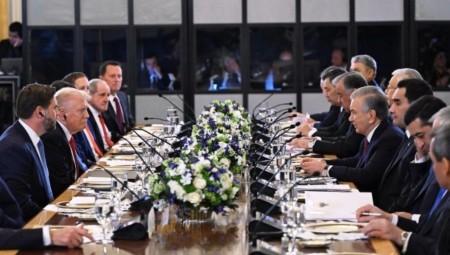The anna.aero analysed the development of the low-cost market in Asia to see how the business model has advanced in the most populated part of the world.
Uzbekistan was the fourth worst in terms of low-cost airline presence after Cocos Islands, North Korea and Bhutan where there is no low-cost service. Uzbekistan recorded the smallest penetration with the business model having just a 0.1% market share of seats. The only low-cost operator in Uzbekistan in 2018 is the Kyrgyz Air Manas which offers a twice-weekly (Wednesdays and Saturdays) service from Bishkek to Tashkent.
Asian low-cost market now larger than Europe
Asia’s low-cost seat capacity has expanded at a double-digit rate since 2008, with an average year-on-year growth rate of 19% being recorded during this time. To give a little bit of context, the European low-cost market has grown at an average year-on-year rate of 9.4% during the same period. So vast is the growth in Asia, that in 2017 the market overtook Europe in terms of LCC seats being flown, with Europe offering over 467 million seats in 2017 versus 478 million in Asia. In 2016, 13.28 million more departing LCC seats were flown in Europe than in Asia.
Market share grows 18 percentage points in 10 years
The market share of low-cost airlines in Asia, in terms of seat capacity, has risen by 18 percentage points between 2008 and 2018, going from a share of just over 10% 10 years ago to 28% this year. Since 2008, the market share of all seats in Asia flown by low-cost airlines has grown on average by 1.8 percentage points per annum, eclipsing the 1.4 percentage point growth rate averaged by European LCCs in their home market. With an average 1.8 percentage point gain year-on-year, anna.aero forecasts that Asian LCCs could potentially achieve a 50% market share of all seats in Asia by 2030. This is three years behind the 2027 forecast for the European market in terms of LCC seats on that continent. By the time the LCC market reaches a 50% market share of seats in Asia, the population size of the continent is expected to grow by 8.8% from today’s level to 4.95 billion inhabitants.
IndiGo advances lead at the top but still behind AirAsia Group
IndiGo is Asia’s biggest LCC, with the carrier offering over 71.4 million seats in 2018, up by nearly 22% versus its offering last year. While Lion Air has only reported a 1.8% rise in capacity this year, choosing to add its extra capacity to its Thai Lion Air unit (up 26% in 2018), it has allowed IndiGo to open its lead at the top to 19.58 million seats, increasing from a gap between the two carriers of 7.70 million last year.
Five nations already at 50% market share
When it comes to low-cost seats, India is by far Asia’s biggest country market for the business model, with the nation home to just under 23% of the region’s departing LCC seats in 2018. To put this in perspective, just over one-in-five low-cost seats departing from Asia this year will take-off from an Indian airport. While anna.aero has forecast that the LCC market share in Asia will reach 50% by 2030, five nations have already reached this barrier in 2018. These are India, the Philippines, Malaysia, Thailand and Indonesia.















